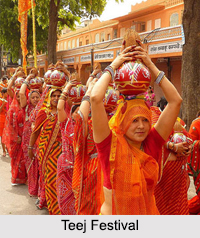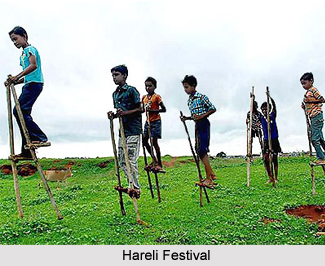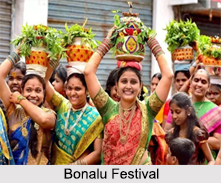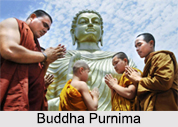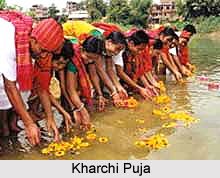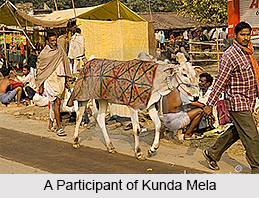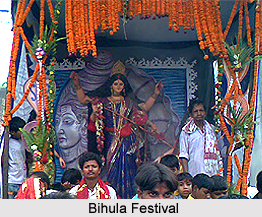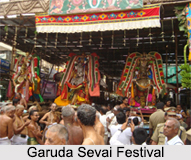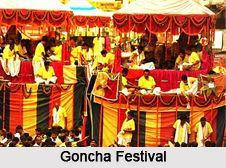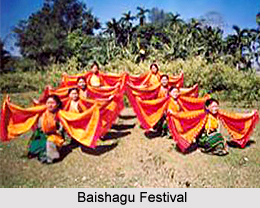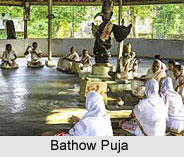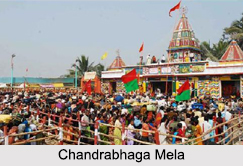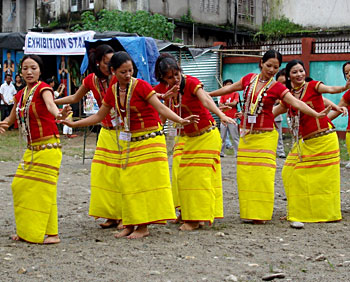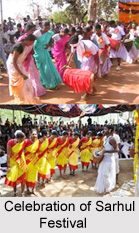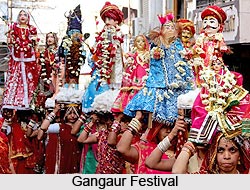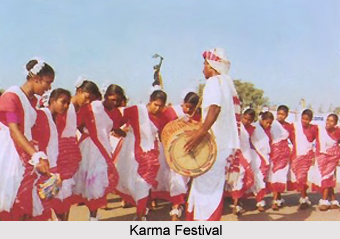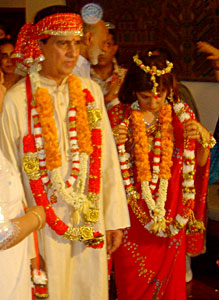 Ritual of Ghari Puja is performed the night before the wedding. It symbolises the journey the couple is taking initially in their lives together. It marks the start of merriment thereby the time to serve food to the guests. The married ladies whose husbands are alive grind wheat and pound turmeric. This ritual also symbolises that the house should prosper always. The boy fills his hands with grain which is offered to the priest. This indicates that though he is entering the Grihastha Ashram he will never forget to give charity. He would look after the needy. This ceremony takes place simultaneously at the same time both in the homes of the bride and the groom.
Ritual of Ghari Puja is performed the night before the wedding. It symbolises the journey the couple is taking initially in their lives together. It marks the start of merriment thereby the time to serve food to the guests. The married ladies whose husbands are alive grind wheat and pound turmeric. This ritual also symbolises that the house should prosper always. The boy fills his hands with grain which is offered to the priest. This indicates that though he is entering the Grihastha Ashram he will never forget to give charity. He would look after the needy. This ceremony takes place simultaneously at the same time both in the homes of the bride and the groom.
Oil and turmeric root is rubbed by the mothers on the bride`s and groom`s hands, feet and backbone. This is a form of cosmetic as well as it helps their physical bodies to become stronger. The mothers of both the bride and the groom along with the husbands of their elder daughters step out of their house with pot of water on their heads. This pot is placed outside the house through which a knife is passed in order to break any evil spell. The son-in-law of the family would be there as a protector against any intruder. They amidst a racket enter the house to ward off any evil spirits that may cast an evil eye on the marriage celebrations. The bride and the groom wear old etathas which are torn by relatives and friends amidst merriment. This signifies that their old life is over and they are entering a new life.
Money is given to the priest by the son in law after circling it around the pot of water. Wheat has to be offered by the bride and groom to the priest. This is distributed to him in a cup twenty one times.
This article is a stub. You can enrich by adding more information to it. Send your Write Up to content@indianetzone.com
